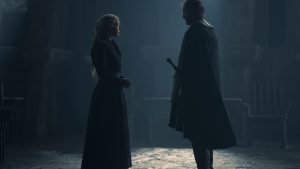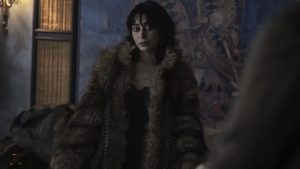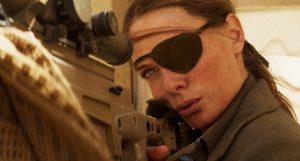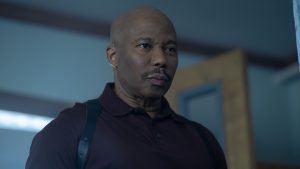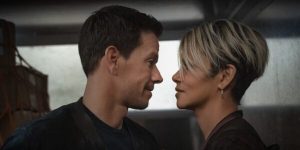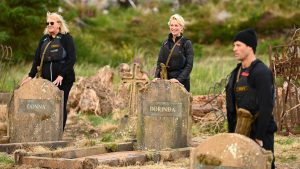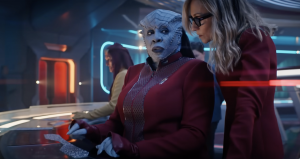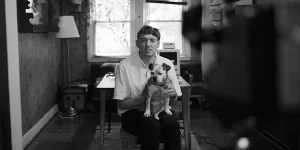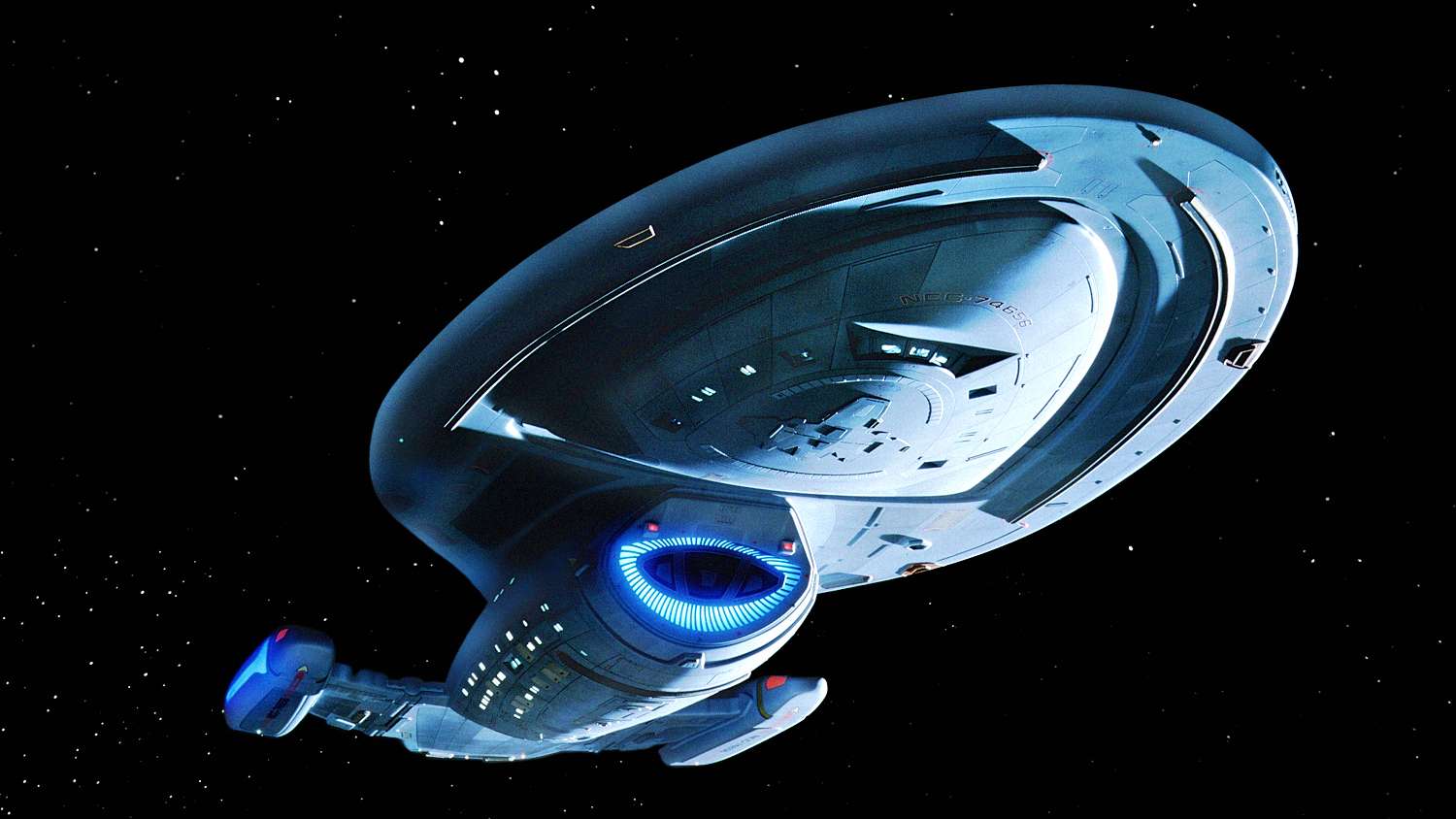
Star Trek has a mixed record when it comes to introducing new alien races. Sure, even non-hardcore Trek fans can list off facts about Vulcans, Klingons, and the Borg, but there are many, many more aliens that fall into obscurity. Mostly because they’re one-off guest aliens used to set up the ethical dilemma of the week. But every so often, the makers of Star Trek bet BIG when it on a new alien species, confident they’ll become a major recurring element of the Trek franchise. And then they faceplant in spectacular fashion.
The most well known disaster was the Ferengi, the money-obsessed culture that was introduced as major recurring (and “imposing”) new threat for Star Trek: The Next Generation. But what was supposed to be a critique of capitalism just came off as silly at best and actively offensive at worst. Yet even with that horrid intro, the Ferengi were eventually rehabilitated in Deep Space Nine, which shifted them to intentionally comedic villains. That spinoff was able to take the shattered remains of the Ferengi and flesh out a race that provided not just comedic stories but moments that offered serious critiques of our modern day. No other Trek race has received this level of redemption, though Lower Decks’ delightful obsession with utilizing obscure bits of Trek lore means deep-cut alien races often get a second shot in animation.
Yet one an alien race that was created at the height of Trek’s cultural relevance in the mid ‘90s has been quietly swept under the rug, even in an era where bringing back characters from critically reviled franchise entries is the hip thing to do. Remember the Kazon?
Introduced in Star Trek: Voyager’s premiere as the major antagonists for the series, they did little to impress. A fragmented race of warring sects, the biggest accomplishments in their debut were kidnapping Kes, a one year-old space elf girl, and bickering over water. Thrilling. They weren’t helped by their makeup design, which can charitably be described as “generic Star Trek alien with a bad hair day.” More accurately they’re just Dollar Store Klingons.
Even as Voyager attempted to make the Kazon work, fleshing out their culture in episodes such as “Initiations,” they never came off as anything more than pale imitations of the massively popular Klingons. The best the series managed was a storyline about how young Kazon earned their place in society. Which amounted to just “kill somebody.” So much depth.
Yet despite the Kazon’s clear failure, series co-creator Michael Piller, speaking in Captains’ Logs Supplemental: The Unauthorized Guide to the New Trek Voyages, was adamant at the time of Voyager’s second season that they’d become “perhaps one of the top five adversarial alien races in Star Trek‘s history.”
That season put all its hopes on the Kazon. They prominently featured in Voyager’s first attempt at a serialized story…which was an unmitigated disaster. While Deep Space Nine was blazing a trail for multi-season arcs in the franchise, Voyager haphazardly tossed “arc” moments into episodes with no rhyme or reason. Remember “Threshold,” the episode where Tom Paris turned into a salamander? It has a bewildering scene where a traitorous Voyager crew member informs the Kazon of the salamander-creating technology. The Kazon never followed up, sadly. It’s telling that as time went on, the entire Kazon race was subsumed into the soap opera antics of Cardassian agent Seska and her baby drama with Commander Chakotay.
Voyager finally abandoned the Kazon as a viable adversary in the season three premiere and never looked back, outside of time travel shenanigans where the Kazon were shorthand for “hey, it’s early Voyager!” The failure of the Kazon, especially as main villains for Voyager’s attempt at serialization, can easily be seen as a contributing reason why the show avoided serialized stories for most of the rest of its run. The writers looked at how badly the Kazon arc went and decided to throw serialized stories out with the Kazon bathwater.
The reputation of the Kazon hasn’t improved over time. No one’s rushing to flesh out the race, like Discovery attempted to do with the Breen. They haven’t gotten a semi-ironic reappraisal like “Tom Paris as a Salamander.” The best they’ve received are small appearances in Star Trek: Prodigy where their main purpose is to be a signifier to the audience that “this is gonna be a show with a lot of Voyager elements in it.”
It’d be easy to say everyone’s agreed the Kazon were off-brand Klingons and move on, but that observation hides the real core problem behind them. One that goes back to their earliest conception. As revealed in the behind-the-scenes book, A Vision of the Future: Star Trek Voyager, the earliest notes for the Kazon from co-creators Jeri Taylor, Michael Piller, and Rick Berman describe them as “gang”-like villains: “They come in and ‘squat’ on a planet. They’re basically bullies. At least two gangs, Crips and Bloods, in competition for influence.”
Nope. With all respect to the work of Taylor in particular, this is somehow worse than the way she attempted to portray gay discrimination in TNG’s “The Outcast,” which had nonbinary aliens as the villains in what feels like a straw man argument from Fox News.
Speaking in Captains’ Logs Supplemental, Piller added that the Delta Quadrant itself was supposed to resemble then contemporary East Los Angeles, with the Kazon as LA street gangs. He had hoped to represent that by casting younger actors, between 18 and 25, as a way to demonstrate the Kazon, “never lived to be old enough to have the kind of experience and perspective on the world that, say, the Klingons or Romulans might have.”
This didn’t end up happening and Piller pointed to it as a reason why the Kazon didn’t ultimately work. Unfortunately, the explanation lacked the self-reflection that a team of producers which featured no one actually familiar with living in East Los Angeles was the wrong one to create a species that served as a metaphor for that experience. At least Piller admitted that the Kazon “ultimately came out being sort of Klingon-ish.”
Taylor was more scathing, also speaking in Captains’ Logs Supplemental. “They’re just sort of big, loutish characters that cause our people to overact. They had a cartoon like quality that I think was not our finest hour.”
Let’s just call them what they are: the Kazon were ill-conceived outright racist caricatures of LA gangs. That’s the real reason no one is rushing to redeem the Kazon. You’d have to completely reinvent them to the point it’d be better to just start fresh with an entirely new alien race.
Thus the Kazon are doomed to their fate as the back-up of the back-up alien race that represents Voyager. The Borg will always truly belong to TNG and the Hirogen, arguably Voyager’s biggest original alien race success story, are too fleshed out to just plop them into small cameos. That’s why the Kazon are referenced by Tom Paris in Lower Decks. They needed something instantly recognizable as being part of Voyager for a quick punchline, nothing more.
You’ll never see a Ferengi-like redemption for the Kazon because they were beyond one from the moment they were conceived.
The post The Star Trek Alien Race That No One Can Ever Redeem appeared first on Den of Geek.
